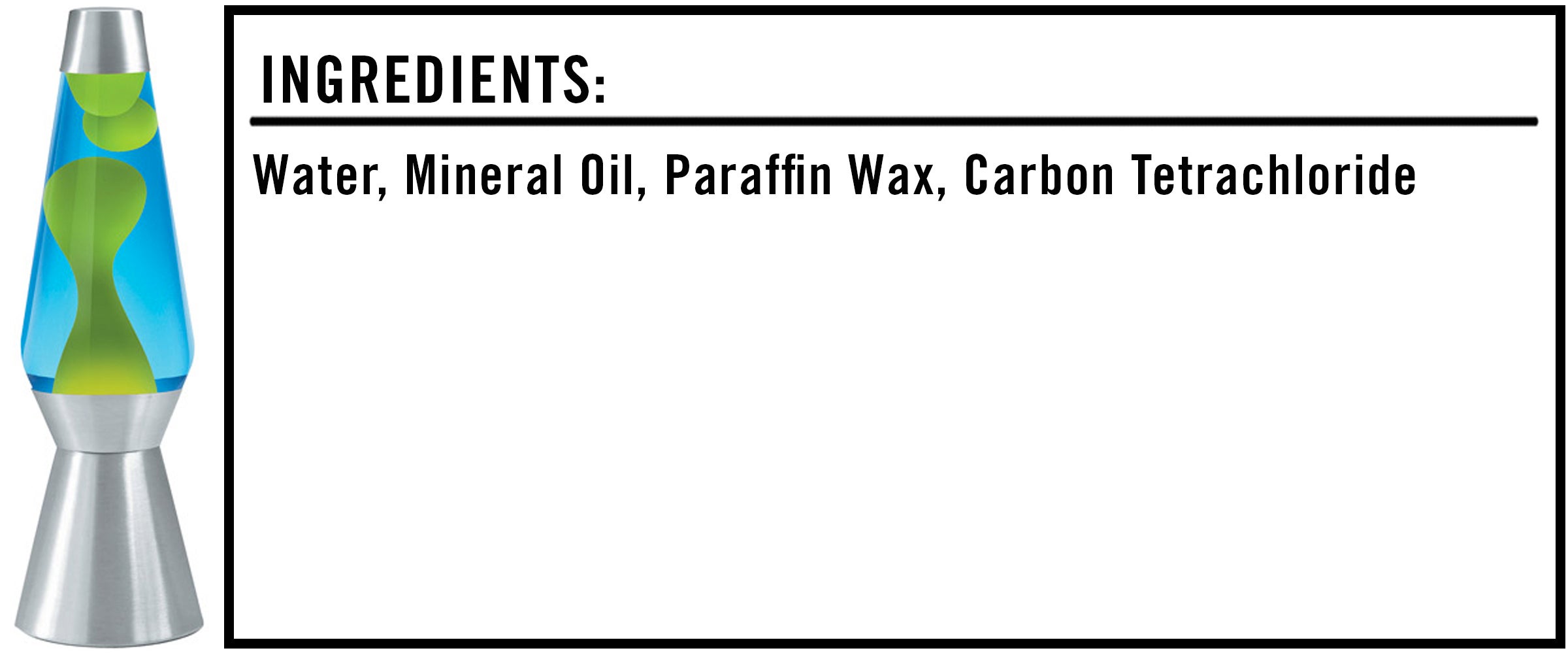We’re often told that you should never eat anything (or put anything on your body) if you don’t recognize everything on the ingredients list. But since most of us have no idea what xanthan gum or potassium benzoate are — or more importantly, what they’re doing to our bodies — we’re decoding the ingredients in the many things Americans put in (and on, or near) themselves.
This edition: Lava Lamps, which are made from at least four — but almost certainly more — separate ingredients that we’ve broken down as they appear on this 1968 U.S. patent. As for a comprehensive list of ingredients, the formulas for most lava lamps have been largely kept under wraps: In 2008, Tom Spain, vice president of sales, marketing and product development for Haggerty Enterprises, the official U.S. manufacturer of Lava brand lamps, told Chemical & Engineering News that only a small handful of staff chemists were privy to their exact formula.
We do have at least some ingredients to go on, though, which you can find below.

The Ingredients
1) Water: Often dyed for extra trippiness, water makes up most of the liquid surrounding the “lava.” There may also be some extra chemicals mixed into the water to prevent fungus from growing in the bottle.
2) Mineral Oil: Mineral oil plays a similar role to water — it provides a liquid for the “lava” to float about in. It does have a notably lower density than water, though, which helps the “lava” bob around more freely, a phenomenon I’ll touch on more in just a moment.
3) Paraffin Wax: This is what makes up the “lava.” Paraffin wax is primarily made of petroleum and can be found in many candles and cosmetics. When the lava lamp is on, the heat from the incandescent light bulb lowers the density of the wax and causes it to expand, which is why it floats toward the top. Then, once it reaches the top, the wax cools down, compresses and becomes more dense, causing it to fall back down — this is how they achieve that “floating lava” effect. One thing of note, though, is that normal wax is typically lighter than water and should normally just float on top, which means there must be some other ingredients at play here (hint, hint).
Another interesting fact: Instead of wax, some more contemporary lava lamps use ferrofluid, which contains magnetic particles that make for extra weirdness (and more explosions in your mind).
4) Carbon Tetrachloride: Right away, I should note that carbon tetrachloride is no longer used in lava lamps made for the U.S. market, because it was banned in 1970 due to it being toxic. But before then, carbon tetrachloride acted to increase the density of the wax, encouraging it to whirl around more, rather than just float on top.
While we can only speculate, there are some other ingredients believed to be in modern lava lamps that could play a similar role to carbon tetrachloride. For instance, a study from 1996 found that one lamp of an unspecified brand contained kerosene and polyethylene glycol, both of which could make the liquid less dense (so the wax would float around more freely). Both of these ingredients, however, are toxic, and that same study focuses on the case of a 65-year-old man who ended up spending three months in the hospital after guzzling the contents of a lava lamp. So as thirsty as you may be, avoid the temptation to glug that lava.
The Takeaway
Lava lamps are fairly simple products of science, and they look pretty cool (especially after taking a joint to the dome, bro). But once again, no sipping!

